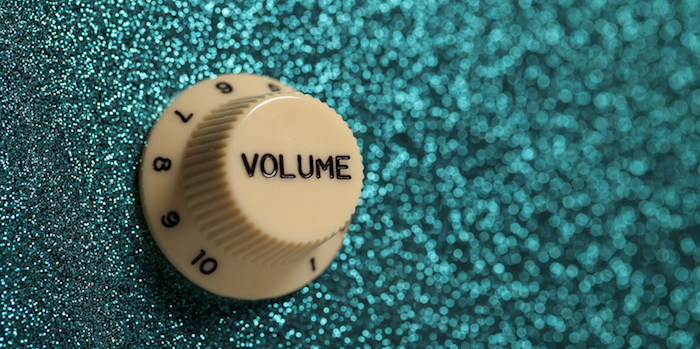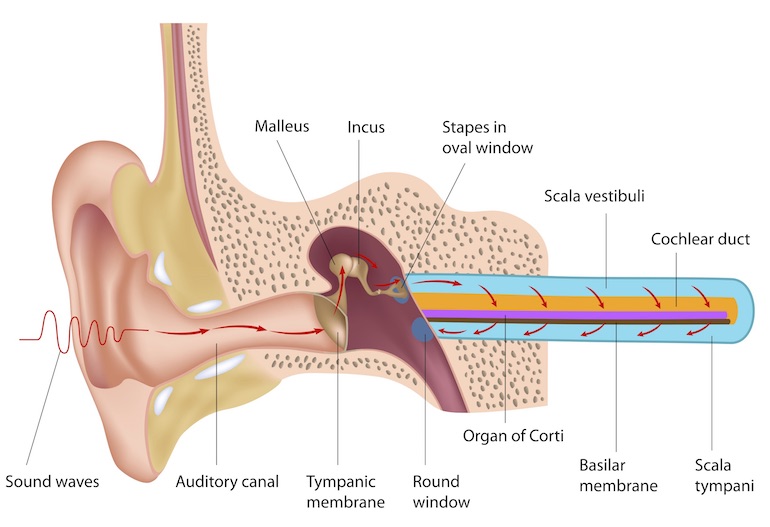-
Cochlear Implants
August 3rd, 2017 | by excitemediaThe cochlea is the organ within the inner ear responsible for receiving and transmitting sound signals to the brain via the cochlear nerve. If the hair receptor cells within the cochlea are damaged, signals may not make it to the cochlear nerve or the brain, resulting in difficulty hearing.
A cochlear implant is a medical device that takes over the function of damaged hair receptor cells. If the ear has functioning nerves to transmit messages to the brain, the implant can provide significant benefits.
How do the implants work?
- An electronic medical device is implanted within the inner ear, with an external sound processor placed near the outer ear.
- The sound processor captures sounds and converts them into digital codes, which are transmitted to the implant within the inner ear via a coil.
- The implant converts the sound signals into electrical impulses, which can be sent along an array of electrodes that are located near the hearing nerves
- The impulses are sent along these nerves, to the brain, where they can then be interpreted.
Who can benefit from a cochlear implant?
These complex hearing devices are typically recommended to people who have experienced a severe to profound hearing loss in both ears, due to problems within their inner ear. They can provide solutions to those who do not experience benefits from hearing aids, due to their poor speech discrimination. Young children are excellent candidates, as cochlear implants encourage increased sound stimulation during early childhood development.
-
How to Treat Tinnitus
August 3rd, 2017 | by excitemediaWhile there is not yet a direct cure for tinnitus, it is possible to treat its underlying causes. Because this condition can be caused by so many different factors, the treatment options vary significantly from person to person.
- Hearing Aids: Some people have been fortunate enough to have hearing aids completely eliminate their tinnitus symptoms. If hearing loss is causing the problem, a hearing device may provide a solution.
- Therapeutic Noise Generators: These devices are often recommended for people with tinnitus who have not experienced hearing loss. They look like hearing aids, but are used to produce a blend of sounds that stimulate the hearing nerve, deviating attention away from the tinnitus.
- Surgical Treatment: If your tinnitus is caused by otosclerosis, middle ear effusion, or other ear problems that can be addressed using surgery, these procedures may also alleviate the ringing in your ears.
- Herbal Remedies: Depending upon the cause of your tinnitus, there are some specialists who believe vitamin B12 and herbal remedies can reduce the symptoms. We recommend that you work with a qualified specialist before trying these methods.
- Cognitive Behavioural Therapy: Clinical psychologists help their patients adapt to tinnitus. CBT exercises teach people how to change the way they perceive the condition, focus their attention away from the problem and control their stress levels.
- Meniere’s Disease Treatment: The diagnosis and treatment of Meniere’s disease can reduce or eliminate tinnitus.
- Jaw Alignment: If your condition is related to pressure building within the jaw joint and muscles, a dentist or orthodontic surgeon may be able to provide relief.
-
What is Tinnitus?
August 3rd, 2017 | by excitemediaAfter being around loud noises like fireworks, live music, or gunfire, you might experience ringing in your ears. Ears can begin to ring in reaction to extremely loud and sudden sounds. For a short time after the noise, you might hear a tone that is not really there. In some cases, this buzzing or ringing does not go away. It may persist or stop for brief periods and return. This condition is known as tinnitus. It can be extremely irritating and distressing.
Who is susceptible to tinnitus?
People of any age or gender can experience this condition, especially after being exposed to loud noise. Studies have shown, however, that the condition is most common among older men. One American study reported that nearly 12% of men between the ages of 65 and 74 experience tinnitus.
What causes tinnitus?
Many ear specialists believe that tinnitus occurs as a result of a problem occurring within the cochlea. Something causes the cochlea to send abnormal signals to the brain. As a result, the brain inputs a substitute noise to compensate for the strange signals. This leads to the persistent or intermittent ringing experienced by people with tinnitus. The condition can be worsened by anything that affects our hearing, including ear infections or excess wax.
There are many different ways that the inner ear can be disturbed, resulting in tinnitus. Examples of causes include:
- Exposure to Loud Sounds: Sounds which require ear protection.
- Meniere’s Disease: Symptoms of this disease include dizziness, nausea, intermittent hearing loss, and tinnitus.
- Pregnancy: Some pregnant women experience an overactive thyroid, which can cause tinnitus.
- Benign Intracranial Hypertension: Increased pressure along the jaw joint can lead to a clicking form of tinnitus.
- Stress and Fatigue: Any time the body feels stressed, tinnitus may be worsened.
- Medications: Adverse reactions to antibiotics, aspirin, or other medications can lead to tinnitus.
- Tumours: A tumour known as an acoustic neuroma may cause tinnitus by growing on the nerve that supplies hearing signals to the brain. This cause is extremely rare and the ringing is typically only noticed within one ear.
-
Reading an Audiogram
August 3rd, 2017 | by excitemediaAn audiogram displays how well you can hear sounds of varying pitches. This information is represented using a graph. Along the horizontal axis, you will see a list of frequencies. The frequencies will rise in pitch as you go from left to right. The vertical axis represents loudness, showing lower sound levels as you rise up the axis.
Therefore, if you have a point on your audiogram that is charted very high and far to the right side of the graph, you are able to hear a high pitched sound at a very soft volume. There will be points on the graph along all of the tested frequencies, showing the softest volume at which you were able to hear the tone.
The results for each ear will be represented on the audiogram. The left ear is represented by the letter X and the right ear is represented by the letter O. If a bone conduction threshold is recorded, these results will be represented by brackets [ and ].
-
How Does The Ear Work?
August 3rd, 2017 | by excitemediaOuter ear
The part of the ear that we are all most familiar with is known as the pinna. The pinna is the external ear you see on the side of your head. It is responsible for catching and funnelling sound toward the ear canal. The ear canal directs sound toward the middle ear. The outer ear is comprised of both the pinna and the ear canal.
Middle ear
The eardrum, or tympanic membrane, marks the beginning of the middle ear. The eardrum receives its name because, like a drum, it has a membrane that vibrates. It vibrates when soundwaves travel through the ear canal.
Behind the eardrum is a small pocket of air and three tiny bones known as the malleus, incus, and stapes – the smallest bones in your body. The vibrations from the eardrum cause these bones to vibrate. The middle ear consists of the eardrum, as well as the pocket of air that contains the three bones.
Inner ear
The inner ear is home to:
- Cochlea: This organ contains thousands of sensory hair cells that allow our ears to convert vibrations from the three middle ear bones into comprehensible sounds.
- Auditory Nerve: The auditory nerve transmits the electro chemical signals produced by the hair cells to the brain to be interpreted.
- Semi Circular Canals: These canals control our sense of balance.
-
Hearing Loss & Dementia
August 2nd, 2017 | by excitemediaDementia is a condition that affects millions of people every year. Those who live with this illness experience a decline in mental ability, which can include memory loss, personality changes and other issues.
These changes affect people’s lives, their families and the community. Recent studies have found that hearing aids could help reduce the risk of people developing this devastating condition.
Doctor Frank Lin, an otologist, led a research team at the Johns Hopkins School of Medicine that investigated hearing loss and dementia. His team found evidence of a causal link between the two; people with hearing impairments were at a greater risk of developing dementia over time. The evidence suggests that using hearing aids could delay or prevent the onset of dementia.
While these theories have not been tested, the research team did speculate on why hearing loss could lead to dementia. They suggest that straining to hear sounds over a long period of time can place stress on the brain, making it more vulnerable. Another possibility is that hearing loss causes social isolation, which is known for creating a higher risk of cognitive disorders.




















